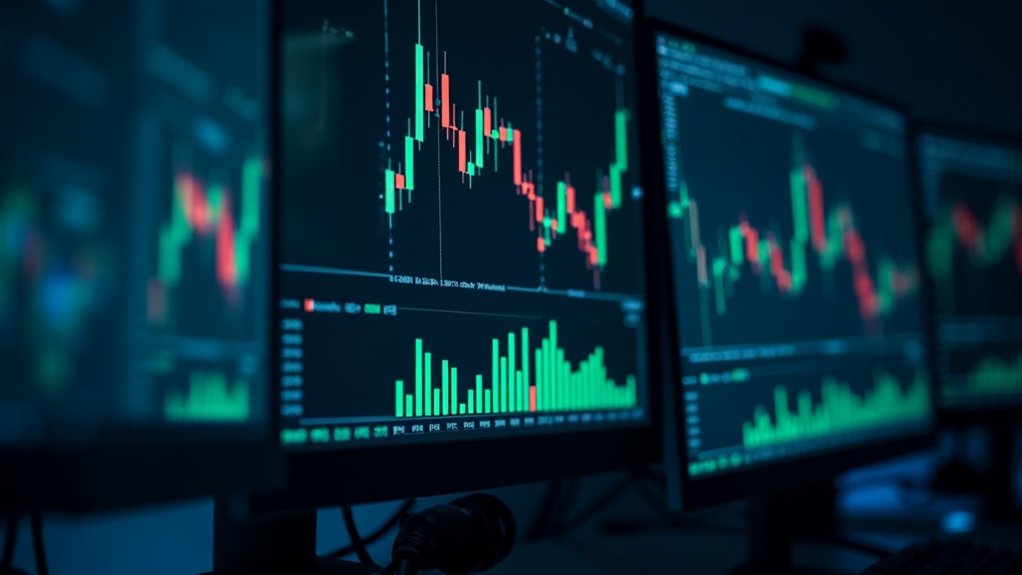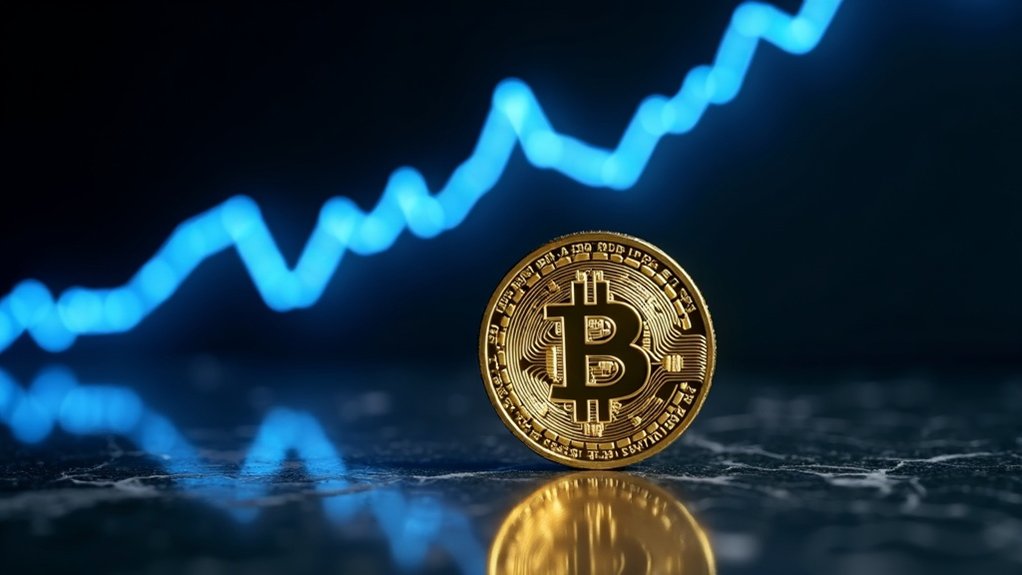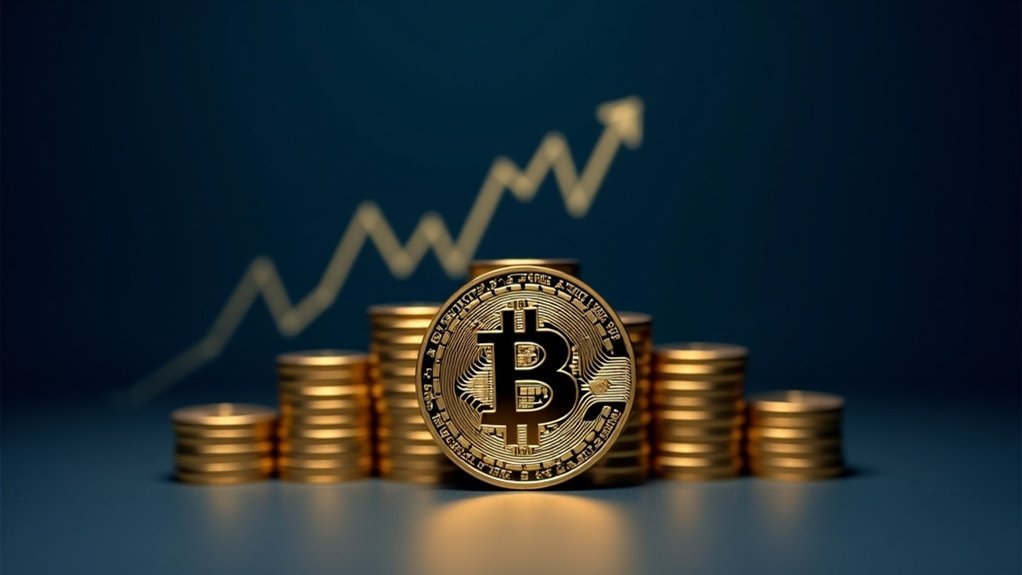Trading volume in cryptocurrency refers to the total amount of a specific crypto bought and sold within a set timeframe, usually 24 hours. It’s the market’s pulse, showing how active traders are. High volume means easy buying and selling without price crashes; low volume signals the opposite. Volume validates price movements, separating real trends from noise. Whales can manipulate it, and exchanges sometimes inflate numbers. The deeper story of market psychology awaits beneath these simple metrics.
Every single day, billions of dollars worth of cryptocurrency change hands across the globe. This constant exchange forms what traders call “trading volume” – a simple concept with massive implications for crypto markets.
It’s the total amount of a specific cryptocurrency bought and sold within a set timeframe, usually 24 hours. Nothing fancy. Just cold, hard numbers showing market activity.
Trading volume tells us a lot. Think of it as the market’s pulse. High volume means the asset is liquid – easy to buy or sell without tanking its price. Low volume? Good luck offloading your obscure altcoin without watching its value plummet.
Trading volume is the market’s heartbeat—your crypto’s survival depends on a strong pulse.
Volume confirms whether price movements are legitimate or just market noise. A price spike with pathetic volume behind it? Yeah, that’s probably not lasting long.
When prices rise with increasing volume, that’s genuine buyer interest. When they drop with high volume, sellers are dumping hard. That’s basic market psychology playing out in real-time.
The big players – those crypto “whales” everyone talks about – can send volume skyrocketing with a single trade. One transaction, market chaos. Centralized exchanges provide the most accurate volume data due to their regulated nature and order book systems.
Volume data is everywhere – exchanges display it prominently, and sites like CoinMarketCap track it obsessively. Technical analysts live for this stuff, using specialized indicators to determine if investors are accumulating or distributing assets.
It’s not perfect, though. Exchanges sometimes inflate numbers. Marketing stunts and trading competitions artificially pump volume. Trust, but verify.
External factors constantly shake things up. Regulatory news breaks, volume explodes. Security breach happens, panic selling ensues. New partnership announced, trading frenzy begins. When analyzing charts, traders often look for volume divergence as a potential signal of upcoming market reversals. Comparing volume to historical averages helps identify whether current market activity is unusual or following established patterns.
The numbers don’t lie, but they’re easily influenced.
At its core, volume is just one piece of the crypto puzzle. It’s a reflection of market sentiment, investor interest, and overall liquidity. High or low, volume always tells a story. The trick is knowing how to read it.
And in crypto’s wild west, that’s no small feat.
Frequently Asked Questions
How Do Trading Bots Impact Cryptocurrency Volume?
Trading bots notably inflate cryptocurrency volume.
They’re constantly buying and selling, creating artificial liquidity that looks impressive on paper.
Some boost legitimate market efficiency through arbitrage and liquidity provision.
Others? Pure manipulation.
Wash trading bots make exchanges look busier than they are.
High-frequency bots execute countless small trades, pumping numbers without real value transfer.
Bottom line: not all volume is created equal.
Bot activity can mask actual market interest.
Can Trading Volume Predict Market Crashes?
Trading volume can help predict market crashes, but it’s no crystal ball. Sharp volume increases often signal selling pressure before downturns.
Volume exhaustion—those massive spikes—frequently mark trend endings. But here’s the catch: volume data gets manipulated. Exchanges inflate numbers. High volume doesn’t always mean impending doom.
Smart traders use volume alongside other indicators. Volume alone? Not enough.
Market crashes stem from multiple factors—macroeconomics, regulations, sentiment shifts—that volume simply can’t capture by itself.
Why Do Volumes Differ Across Exchanges?
Trading volumes differ across exchanges for several obvious reasons.
User base size matters—bigger crowds, more trades. Simple math.
Liquidity varies dramatically between platforms, affecting how attractive they are to traders.
Some exchanges list different coins than others—can’t trade what isn’t there.
Geography plays a role too; certain platforms dominate specific regions.
And let’s not forget the elephant in the room: wash trading. Some exchanges inflate numbers to look busier than they really are. Classic smoke and mirrors.
Is Wash Trading Still Common in Crypto Markets?
Yes, wash trading remains rampant in crypto markets. Unregulated exchanges still show over 70% fake volume in some cases.
A whopping $2.57 billion in wash trades occurred in 2024 alone. Ethereum gets hit hardest, especially during price surges. XRP saw increased wash trading during legal troubles. Bitcoin and Litecoin? Less affected.
Detection methods are improving, using transaction patterns and statistical anomalies to spot the fakes. Regulators are paying attention, but enforcement across borders remains challenging.
How Does Volume Affect Cryptocurrency Liquidity?
Volume directly impacts cryptocurrency liquidity.
Higher trading volume means more buyers and sellers are active, creating deeper markets where large trades can happen without moving prices much.
Low volume? Good luck selling without tanking the price.
Volume fundamentally determines how easily assets convert to cash or other cryptos.
It’s a safety net against price manipulation too.
Markets with consistent high volume across exchanges tend to have more reliable pricing.
Pretty straightforward relationship, really.









